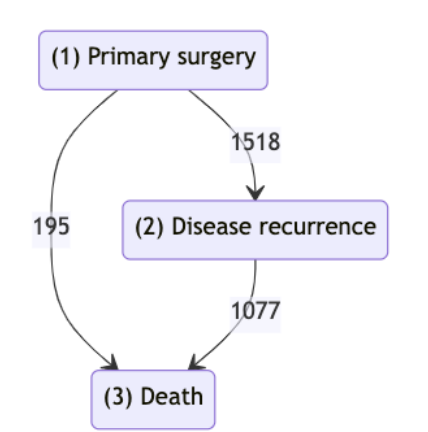PyMSM: Python package for Competing Risks and Multi-State models for Survival Data
Hagai Rossman, Ayya Keshet, Malka Gorfine
Multi-state survival data are common, and can be used to describe trajectories in diverse applications such as a patient’s health progression through disease states, pickups during the workday of a taxi driver, or a website browsing trajectory to name a few. When faced with such data, a researcher or clinician might seek to characterize the possible transitions between states, their occurrence probabilities, or to predict the trajectory of future observations given various baseline and time-varying individual covariates (features). By fitting a multi-state model, we can learn the hazard for each specific transition, which would later be used to predict future paths. Predicting paths can be used at a single individual level, for example predicting how long a cancer patient will be relapse-free given his current health status, or at what probability will a patient end a trajectory at any of the possible states. At the population level paths predictions can be used, for example, to estimate how many patients which arrive at the emergency-room will need to be admitted, given their covariates. Moreover, their expected hospitalization duration can also be inferred, and provide planners with anticipated patients load.
